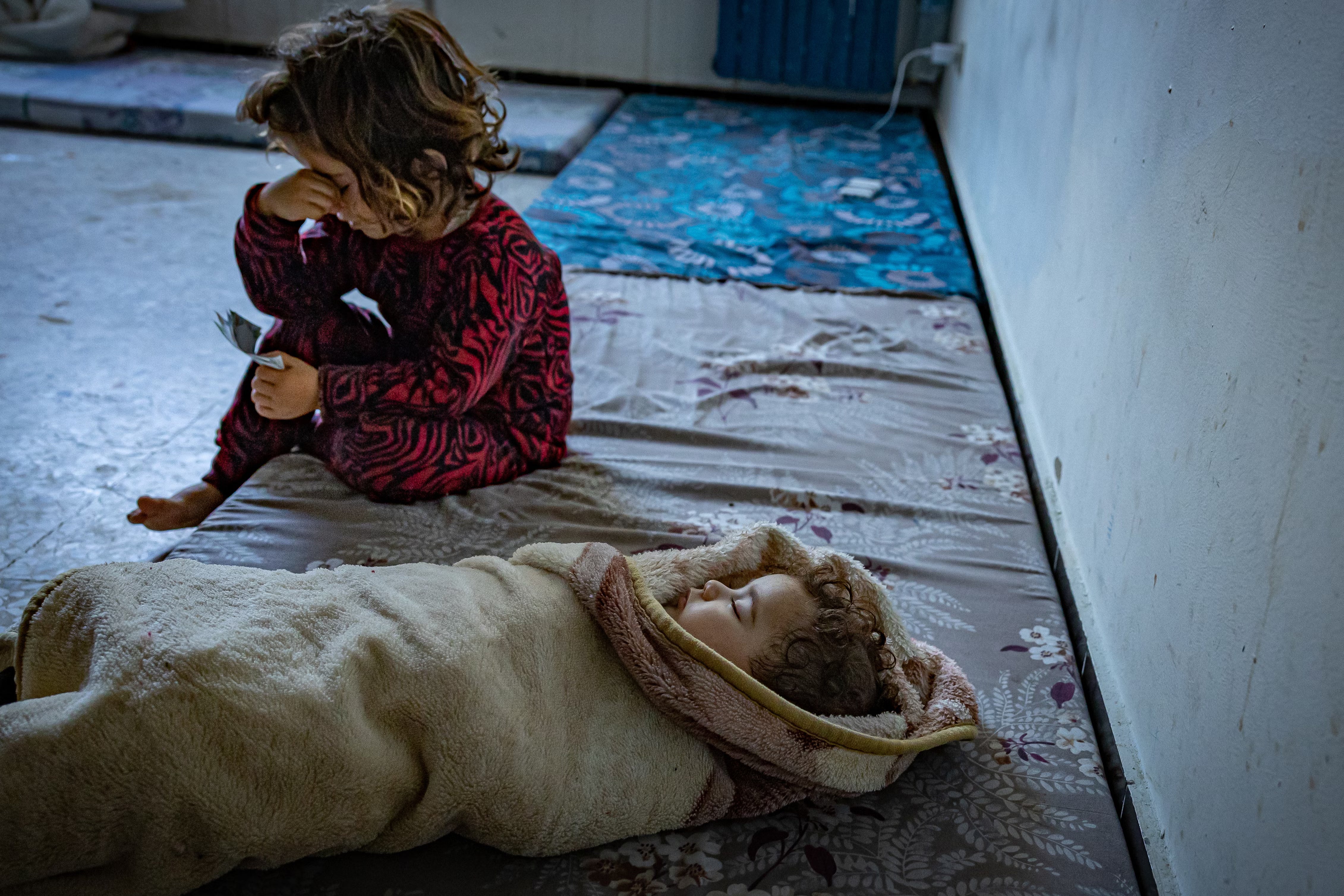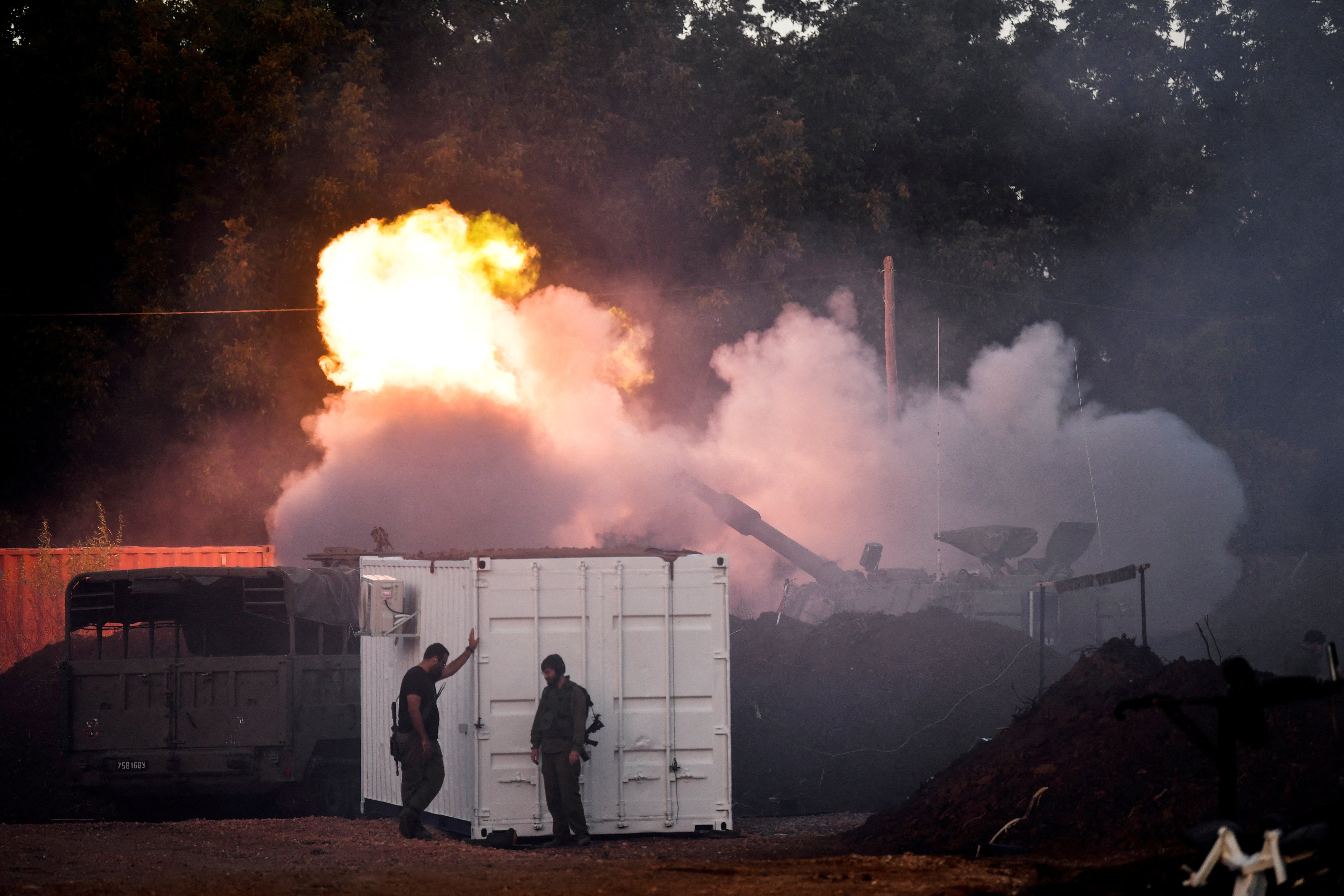The families forced to flee the clashes on the Lebanon-Israeli border: ‘A shell landed in the garden’
Alongside the bombardment of Gaza, Israel and Hezbollah have been exchanging artillery and missile fire on the Lebanese border. Bel Trew travels to Tyre to speak to families who have fled the border regions to escape the fighting, with a number of them having had to flee war before


Your support helps us to tell the story
This election is still a dead heat, according to most polls. In a fight with such wafer-thin margins, we need reporters on the ground talking to the people Trump and Harris are courting. Your support allows us to keep sending journalists to the story.
The Independent is trusted by 27 million Americans from across the entire political spectrum every month. Unlike many other quality news outlets, we choose not to lock you out of our reporting and analysis with paywalls. But quality journalism must still be paid for.
Help us keep bring these critical stories to light. Your support makes all the difference.
A little more than a decade after she fled war in Syria as a teenager, Asmaa, 29, tucked her two youngest children under her arms and ran again.
Her five-month-old was screaming as they sprinted away from Israeli tank fire along the border areas in Lebanon to try to find safety.
The bombing was so close that shrapnel sliced a thin scar down her 11-year-old daughter Inaam’s face.
“We were sitting at home in the evening when the tank fire started getting closer and closer,” the mother-of-six tells The Independent from a school where she was sleeping on the floor of a classroom, with no electricity. More than 150 people are now living there in classrooms divided by tarpaulin.
“Then a shell landed in the garden in front of the house so we ran.”
Behind her, Inaam tends to her five-month-old sibling, swaddled in a blanket and lying on a piece of foam on the floor which functions as a bed the family share.
“We saw the house next door completely destroyed and didn’t even look to see what happened to where we live. We brought nothing with us and ran.”
They were living in a sleepy Lebanese village around 600 metres from the “Blue Line” – the unofficial frontier between Lebanon and Israel.

The family walked 11 miles (18km) to Bint Jebeil before a passerby offered them a lift to the safety of the suburbs of Tyre, or Sur as it is known in Arabic. Lebanon’s southernmost city has become a key refuge for thousands of people who have been displaced since hostilities erupted between Israel and Lebanon’s Hezbollah.
The Israeli military and Hezbollah fighters have been engaged in some of the fiercest cross-border clashes in 17 years, as Israel’s war with Palestinian militant group Hamas about 125 miles away in Gaza has reverberated through the region.
Israel has laid siege and launched its heaviest-ever bombardment of Gaza in retaliation for a bloody attack inside Israel by Hamas on 7 October, when 1,200 people were killed and around 240 hostages taken.
In Gaza, Israel’s bombing has killed more than 20,000 people, three-quarters of them women and children, according to the local health authorities in the Hamas-run enclave.
Hezbollah has pounded Israeli territory near the Lebanese border in support of Hamas, which is also backed by Iran. At least 20 people, including journalists and children, have been killed in Lebanon.

The border violence is the worst since Israel and Hezbollah fought a month-long war in 2006, with Hezbollah saying it has lost more than 100 fighters. At least 80,000 Israelis have fled towns and villages in the north. Israeli officials have said that Beirut would be turned “into Gaza” if Hezbollah starts another all-out war and strikes deeper into Israeli territory, warning that the Lebanese capital will not survive as we know it.
There are concerns the clashes could spark a regionwide conflict if they escalate. A protracted conflict would be devastating for Lebanon, which is in the grips of one of the world’s worst economic crises after its financial system collapsed in 2019, destroying the currency, driving up poverty and paralysing much of the state.
The small Mediterranean country has only a few hours of state power a day, many struggle to put food on the table, and the conflict is now driving people from their homes to other parts of the Tyre district which stretches from the border north up the coast.
Bilal Kashmir, who is helping coordinate the response to the crisis in Tyre municipality, says that there were 20,000 people displaced across the entire region, with 690 of the poorest and most vulnerable like Asmaa seeking shelter in five schools.

He says they were struggling to care for the displaced, as the schools had no power and little running water.
“The difference to the war in 2006 is back then, it only lasted a month and there was international support for Lebanon and a working economy,” he says, mentioning the Gulf support rebuilding destroyed homes and giving humanitarian aid.
“Now there is nothing and the country is in a desperate state. The conflict has already been going on for more than two months and will continue.”
Last month, Qatar brokered a temporary truce in Gaza which included the return of Israeli hostages and release of Palestinians detained in Israeli prisons. With the border also relatively calm during that time, Lebanon was able to assess some of the damage but still no one knows if Lebanon’s government will have the resources to rebuild it.
“The government has put aside some money to deal with this, but we don’t think it will be enough,” Kashmir adds.
In the school in Tyre, there are only a few hours of power a day, and the families rely entirely on donated tins of tuna and vegetables.

Sitting on the floor of one of the rooms, Randa Said, 29, a mother-of-two, says her family fled when tank fire destroyed the home next to theirs. She said her children cry whenever they hear lightning or thunder. The family is no stranger to war: Randa says her uncle Hussein Sayed was killed by Israeli tank fire in 2006 when he tried to help a wounded female journalist. The family evacuated to Tripoli in the north back then.
“This time we stayed as long as we could as we had nowhere to go. In the end, tank fire destroyed the car and we knew we had to flee.”
Her husband Wahib Hummayid, 45, says the day after they left, their home was partially destroyed, showing videos of charred remains of a building.
“Even if the war is over we don’t know if we can go back.”
Sharing the room was Randa’s father Mustafa Said, who has 11 children in total. He says he works day by day as a labourer, a job he cannot do now.
“We entirely live off donations by the local members of this community but we have no idea how long that will last,” he says as the children play in the background.
“Why don’t the people in America and the UK put pressure on Israel to stop this?”
Subscribe to Independent Premium to bookmark this article
Want to bookmark your favourite articles and stories to read or reference later? Start your Independent Premium subscription today.
Join our commenting forum
Join thought-provoking conversations, follow other Independent readers and see their replies
Comments